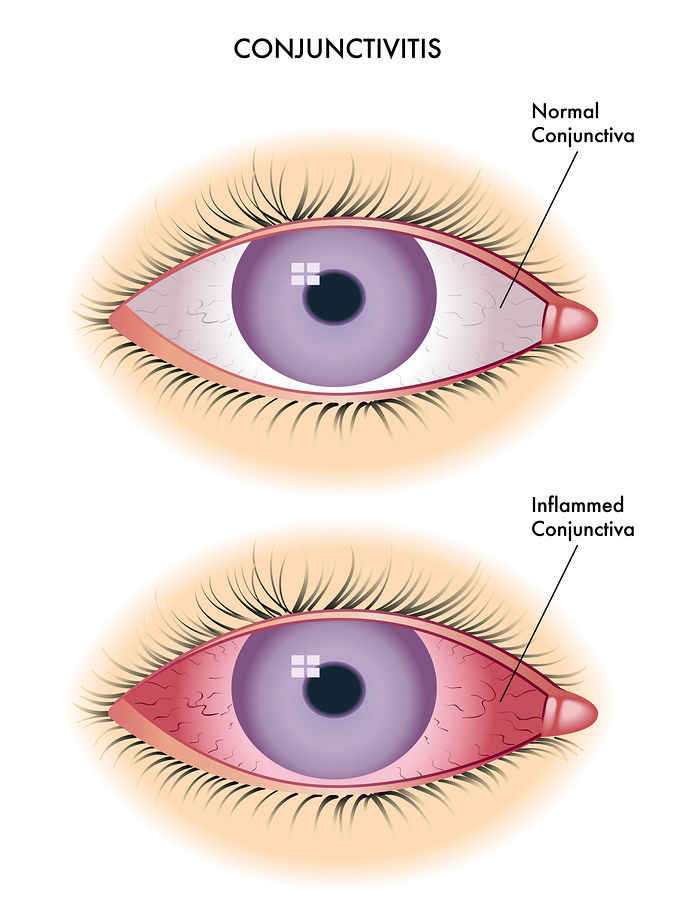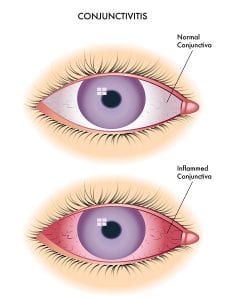What is pink eye?
If you have school age children, you’ve probably been through at least one round of pink eye, also known as conjunctivitis, in your house. It is common among school age children and teachers because of the closeness of the classroom setting. Germs spread rapidly, and pink eye is an easy spread.
Many people have limited knowledge of this familiar ailment. So what exactly is pink eye? It is inflammation of the thin, clear covering of the white of the eye and the inside of the eyelids (conjunctiva). Although the conjunctiva are themselves transparent, they contain blood vessels over the eye. When these get inflamed the blood vessels themselves dilate and this causes the blood shot appearance to the eye. These can happen for a number of reasons, but only when it is caused by a contagious virus strain is when it is referred to by doctors as pink eye.
The three main kinds of conjunctivitis are:
-
Viral conjunctivitis.
Caused by a virus, like a common cold. As stated, this type of pink eye is contagious, but will usually clear up on its own without medicine. Viral Conjunctivitis causes watery and itchy eyes which are sensitivity to light. One or both eyes can be affected. It is typically spread by coughing and sneezing.
-
Bacterial conjunctivitis.
Caused by bacteria, may cause serious damage to the eye if left untreated. Antibiotic eye drops are necessary in this case. The symptoms include sticky, yellow discharge in the corner of the eye. In some cases, this discharge can be severe enough to cause the eyelids to be stuck together when you wake up. One or both eyes can be affected. Contagious by direct contact, eye to hand, hand to eye.
-
Allergic conjunctivitis.
Caused by eye irritants such as pollen, dust and animal dander. Allergic conjunctivitis may be seasonal or flare up year-round. It causes watery, burning, itchy eyes; also often with stuffiness and a runny nose. Both eyes are affected. Allergic conjunctivitis is not contagious.
What you need to do to care for Pink Eye:
Depending on the symptoms and type of conjunctivitis, the treatment will vary. For viral conjunctivitis there is no treatment needed. Cold or warm wet-wash-cloth compresses can relieve symptoms temporarily, however it is simply a matter of time for it to run its course. Be sure to wash hands to minimize germ spread.
For bacterial conjunctivitis it is important to have your eye doctor prescribe antibiotic eye drops or ointment to prevent further infection. Again, vigilant hand washing and not touching the eye will limit the spread of the germs which caused the infection in the first place.
Allergic conjunctivitis may be reduced or relieved through the use of allergy medications. It is important to seek medical help for the treatment that fits your particular needs.
The best way to prevent pink eye is to practice good hand washing hygiene, to keep surfaces clean and disinfected, to reduce the touching of one’s eyes, and to never share items which have touched another person’s eyes or eye area.
If you or your child does contract pink eye it is important to do your part in reducing the spread by refraining from public places until it has cleared (including school or work). Be sure to wash hands and in the instance of having to touch one’s own eyes, immediately wash hands thoroughly with antibiotic soap or us hand sanitizer.
Eyesite of the Villages is a full service eye care center that offers exclusive solutions to your problems. Our eye doctors in the Villages can help you pick the right glasses. We also have eye doctors to assist you with your eye care needs.
For more eye care tips, keep checking our site. You can also call us at(352) 674 – 3937 for more information on our eye products and services.


